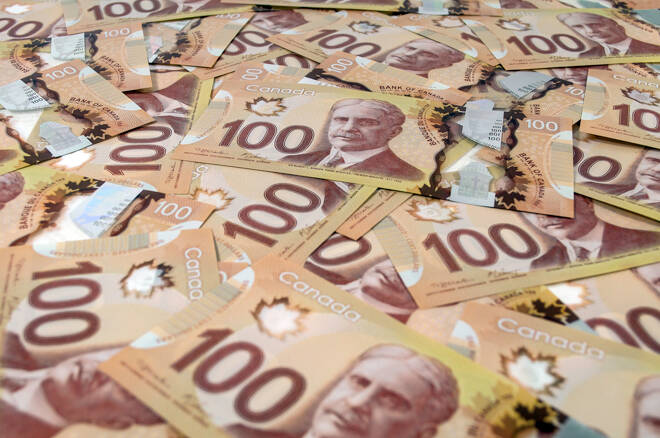Advertisement
Advertisement
USD/CAD: Loonie Gains as U.S. Dollar Retreats; Volatility Will Dominate
By:
The Canadian dollar bounced back from a nine-month low against the U.S. currency on Monday after the greenback retreated from nine-month highs as economic data eased tapering fears.
The Canadian dollar bounced back from a nine-month low against the U.S. currency on Monday after the greenback retreated from nine-month highs as economic data eased tapering fears.
The USD/CAD pair fell to 1.2675 today, down from Friday’s close of 1.2821. The Canadian dollar lost about 1% in July – the second biggest monthly decline since September 2020 – and has further dropped about 1.7% this month.
“USDCAD marched 3.5 big figures steadily higher last week to reach 1.2950 but ended Friday well off the intraday high (forming “shooting star” candle) and is starting the week off well offered and net lower on the day, forming the third leg of a bearish “evening star” candle on the daily chart. A low close on the day (at or near current levels) would cement a major—and usually reliable—bearish reversal signal that would suggest a deeper unwind of the USD’s mid-August push higher is poised to unfold,” noted Shaun Osborne, Chief FX Strategist at Scotiabank.
“We note, however, that the USD has established a strong underlying bull trend—trend oscillators are aligned bullishly on the short, medium and longer run DMIs—which rather suggests that USD losses should remain contained for now. A low close on the day today should see the USD edge back to the mid-1.25s/low-1.26s at least but we look for firm USD support on dips.”
The dollar index, which measures the value of the dollar against six foreign currencies, was trading 0.41% lower at 93.107. Despite the safe-haven currency’s biggest weekly rise in more than two months last week, markets rose on Monday as weak data implied the Fed wouldn’t remove its accommodative stance soon.
A report from IHS Markit found that U.S. businesses’ activity growth slowed for the third straight month in August, largely due to capacity constraints, supply shortages, and the rapid spread of Coronavirus.
According to the Fed minutes released on Wednesday, if the economy continues to improve as expected, the Fed may reduce the bond-buying stimulus this year. That means the Fed will not flood the financial system with cash if they reduce debt purchases. This is typically positive for the dollar.
However, it is likely that the world’s dominant reserve currency, the USD, will rise over the coming year, largely due to the expectation of two rate hikes by the Fed in 2023. With the dollar strengthening and a possibility that the Federal Reserve will raise interest rates earlier than expected, the USD/CAD pair may experience a rise.
Canada is the world’s fourth-largest exporter of oil, which jumped over 5% on Chinese demand optimism and a weaker dollar. U.S. West Texas Intermediate (WTI) crude futures were trading 5.47% higher at $65.48 a barrel. Higher oil prices lead to higher U.S. dollar earnings for Canadian exporters, resulting in an increased value of the loonie.
About the Author
Vivek Kumarauthor
Vivek has over five years of experience in working for the financial market as a strategist and economist.
Advertisement
